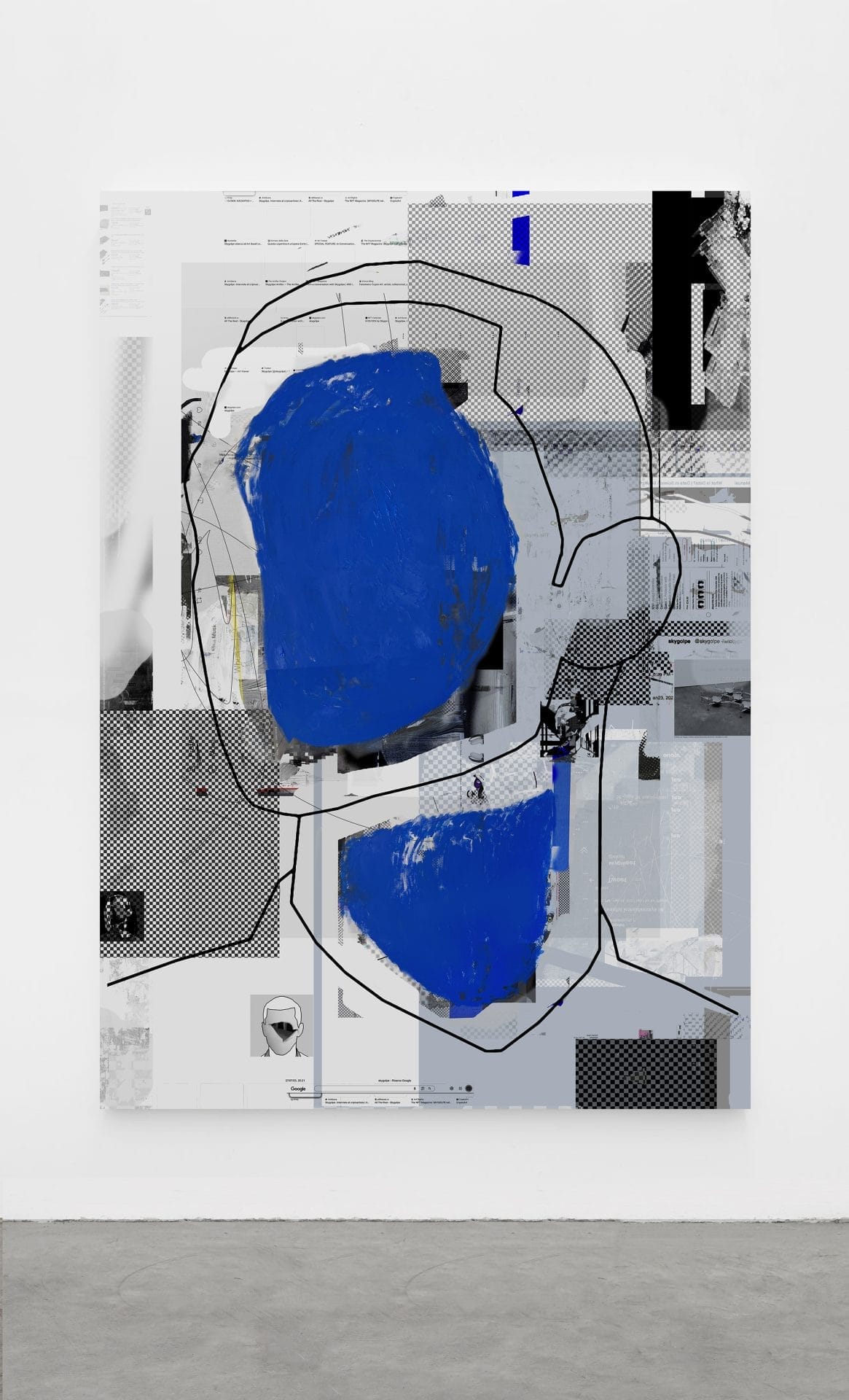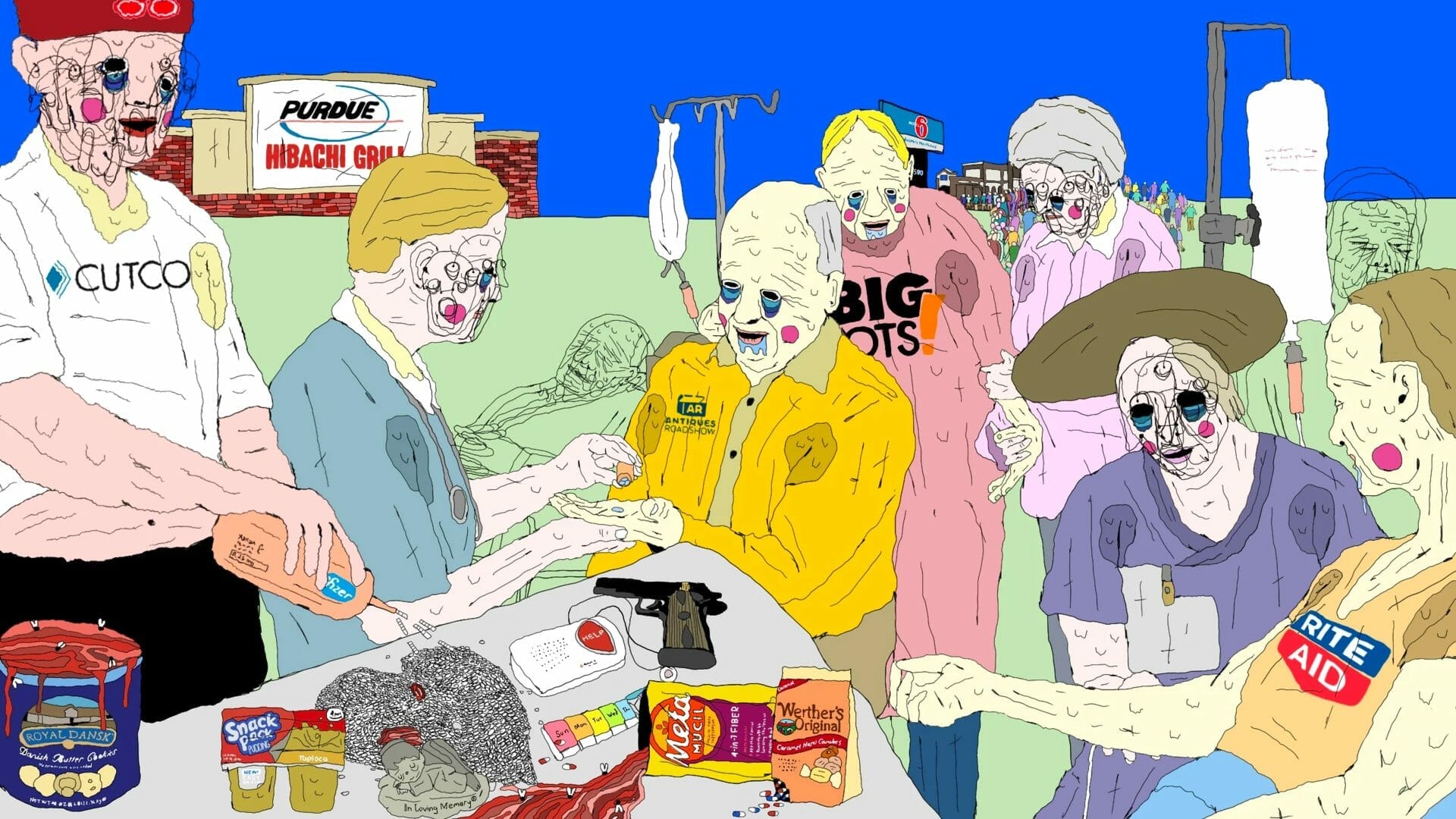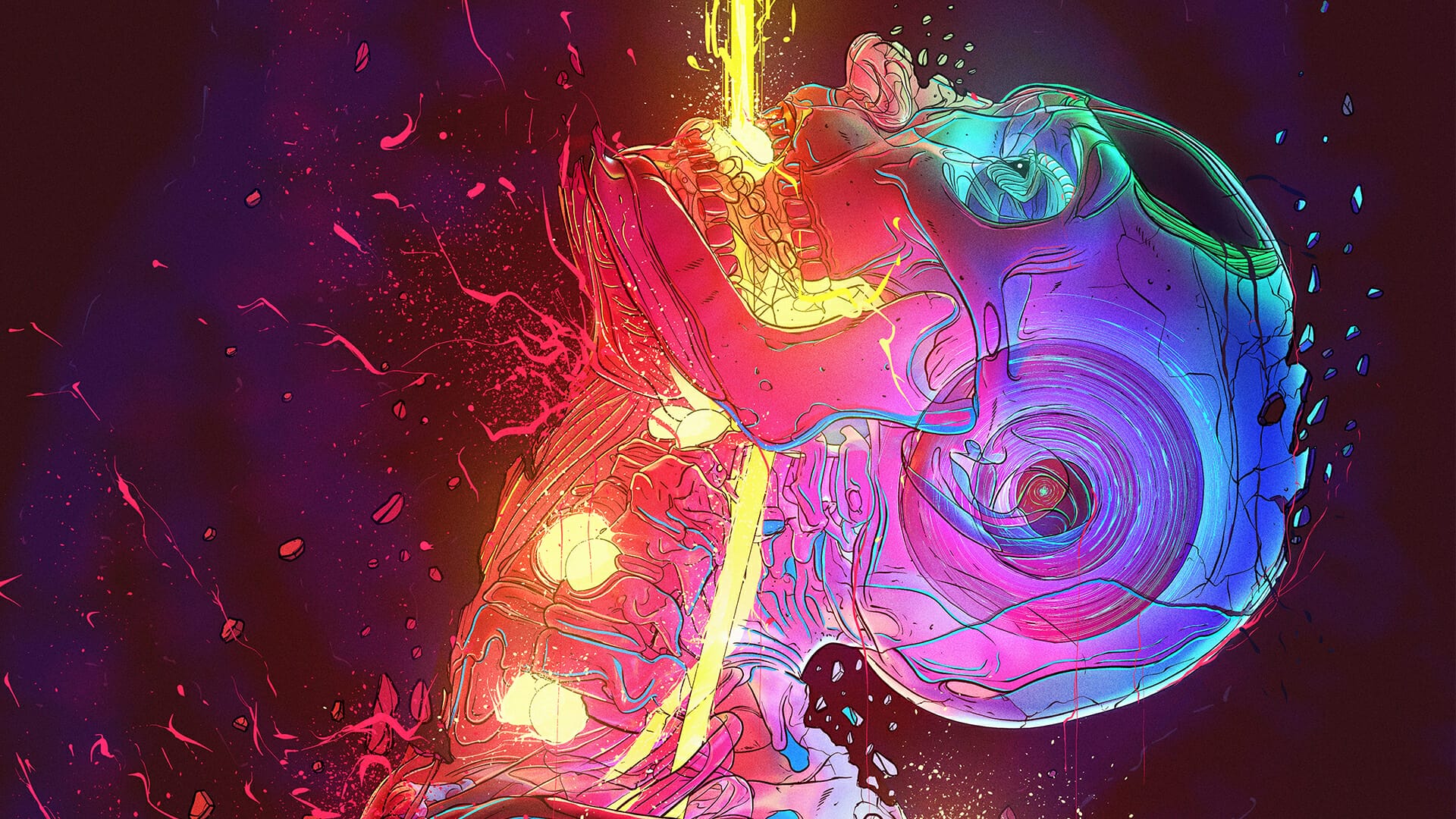
Skygolpe in Conversation with Fakewhale
Taking place at Foundry, Dubai, from November 15th to January 7th, 2024, Skygolpe’s ‘Third Dimension’ unfolds as a defining moment in contemporary art, blending the digital and the physical in a powerful display.
Curated by Giuseppe Moscatello and produced by Valuart, this exhibition marks a pivotal chapter in the evolving story of artistic expression — Each piece of ‘Third Dimension’ a fusion of historical context, philosophical thought, and technological advancement, revealing a complex and profound artistic vision.
Our discussion with Skygolpe explores how his works bridge the tangible and the digital, offering a deep understanding of his role as an artist reshaping our perceptions of art and reality in a world where these domains are increasingly interconnected.
Fakewhale: Your work embodies the profound shift in today’s visual languages. How do you perceive your role in this transformation of contemporary art, and what do you believe are the key elements or principles of these new visual languages that your work showcases?
Skygolpe: I have always believed that a bridge between the more traditional dimension of visual arts and the new horizons offered by digital art was necessary, and this needed to be showcased. One of the key elements in my work concerning visual languages is hybridization. I blend the digital and the physical, essentially creating a new dialogue between these two worlds, and this also serves as the conceptual glue for the new exhibition at Foundry Downtown in Dubai.
Thinking about this exhibition, my work behaves more like an entity that exists continuously and consistently in both the digital and physical environments.
Another fundamental principle is intentional error, imperfection. In my canvases, digital ‘errors’ and the physical imperfections of the paint are equated, and thus the thicknesses and uncontrolled marks on the canvas become perfectly fitting elements in the whole.
The use of artificial intelligence in my photographic practice is an additional exploration of the medium. In this new exhibition, I aimed to create a continuous experience that would push the audience to see beyond the aesthetic dimension.


Fakewhale: After achieving remarkable success in the digital art market, you appear to be one of the few leading artists of this prosperous era who has expanded your scope and ambition into the realm of physical art. How have you navigated this transition, and what kind of reception or experiences have you encountered in the world of physical art?
Skygolpe:The art market’s evolution is poised at a pivotal juncture where innovative technologies blend seamlessly with the rich tapestry of cultural and historical art forms. In my journey, the realm of NFTs has been not a culmination, but a springboard, launching me into uncharted creative territories.
My pursuit has always been about more than just artistic creation; it’s about carving a path of total artistic independence. This unique trajectory is not just a personal milestone but a gateway to influencing and shaping the future of artistic expression.
Among my accomplishments, what stands out is the way my ‘Paint on Pixel’ collection has resonated with traditional art collectors. This achievement transcends the usual boundaries that often segregate digital and physical art worlds. It’s a testament to the breaking down of long-standing stigmas, proving that digital art is not confined to a niche audience.
Furthermore, integrating NFT digital certificates with each piece in this collection does more than validate authenticity; it educates and paves the way for wider adoption. It’s a harmonious blend of the old and new, a bridge between traditional art appreciation and the burgeoning world of digital artistry. In doing so, I aim not just to connect these worlds but to enrich them, fostering a dialogue that is inclusive, expansive, and continually evolving.
Fakewhale: Embarking on grand-scale paintings marks a significant development in your artistic repertoire. Could you discuss what these large-scale works signify? How do they represent a new chapter or evolution in your creative expression, and what are the key themes or concepts you are exploring through this more expansive canvas?
Skygolpe: The evolution towards large-scale works is a head-on clash with the physical dimension, but also an ‘extension’ of my visual and conceptual language.
Approaching this larger scale is like moving from an intimate conversation to a broad, open dialogue, which metaphorically invites the viewer to physically enter the space of the artwork for a more invasive impact.
Large formats push me to think beyond the traditional boundaries of the canvas, a statement of my intention to continue pushing limits to explore new perspectives and possibilities, belonging to the physical dimension.

Fakewhale: Your work is informed by philosophy, digital culture, and technology. Can you share how these disciplines converge in your creative process, and how they inform the thematic and aesthetic choices in your art, especially in the ‘Paint on Pixel’ series?
Skygolpe: Philosophy provides a conceptual foundation for my work, captivating in its exploration of themes like existence, reality, perception, and consciousness. These philosophical concepts guide me as I probe the nature of a technology-dominated reality. As for digital culture, I am fascinated by how it has transformed our view of the artistic sector and its associated market.
My work is inspired by this shift, exploring how digital experiences shape our perception of reality. I use digital media not only as tools but also as critical subjects, reflecting on how technology influences our everyday lives and our modes of expression.
I strive to shape the seemingly elusive boundary between two distinct dimensions.
Their union, akin to a mixed reality, gives rise to a third one, aptly named ‘Third Dimension’.

Fakewhale: Your decision to prominently feature the statement ‘NFTs are dead’ at the entrance of your exhibition presents a thought-provoking paradox. Could you elaborate on the meaning behind this statement?
Skygolpe: ‘NFTs are dead’ is a provocation intended to stimulate reflection on the speed with which trends in the digital art world are perceived by the public. Obviously, it’s not a criticism of NFTs, but rather an invitation to think beyond the present, exploring the future of digital art in a world that is constantly changing and whose future is decidedly impactful. In a world where everything now has a digital counterpart (even our identity), it’s hard to imagine that art hasn’t followed suit.
This contradictory statement challenges viewers to consider the meaning of the expression itself by paradoxically proposing the idea of the ‘mortality’ of a medium to anticipate an emotional reaction in the viewer. As you know, contradiction is one of the central themes of my work.

Fakewhale: ‘Third Dimension’ is not just an art exhibition, it is a journey through the complexities of human experience. How do you conceptualize the intertwining of past, present, and future in your work, and what insights do you aim to offer about the nature of perception and emotion in this inter-temporal landscape?
Skygolpe: ‘Third Dimension’ is an exploration of how the past, present, and future intertwine in my work. Within the exhibition, I retrace steps from digital to painting to AI works. I wanted to create something thoroughly comprehensive. The aim is to offer a glimpse into the fluid nature of reality and how our understanding of it changes over time, inviting viewers to reflect on their personal interpretation of the third dimension.
Today, artists producing physical works such as paintings and sculptures are implicitly led to think about the digital counterpart these creations will have, their presentation, photographs of the works, and how they will appear online. This is not only happening in art but in numerous creative fields. The tendency to think about this shift introduces the principles of existence of the ‘Third Dimension’ I speak of.
Fakewhale: Your hallmark silhouette, with its indistinct and disintegrating borders, is a recurring element in your work. What does this silhouette represent in the context of digital identity? and how does it serve as a metaphor within ‘Third Dimension’?
The silhouette is my deepest connection to the concept of existentialist philosophy that is fundamental to my work, as it focuses on the intrinsic relationship between human beings and existence itself.
The silhouette in my work, shrouded and dissolving, stands as a cipher for our digital identity fragmented, fluid, and often incomplete. It mirrors the complexities of human consciousness in an era where technology reshapes our sense of self. In ‘Third Dimension,’ this silhouette transcends its usual context; it becomes a vessel for exploring deeper truths about our existence. It is the shadow we cast in the digital space, a metaphor for the imprint we leave behind, a presence both permanent and ephemeral in the vast expanse of the digital universe.

Fakewhale: In your AI-photographic series, as you’ve mentioned you have used generative image algorithms over several months to create works that challenge the boundary between reality and perceived reality. Through this series, what fundamental questions are you exploring regarding the role of AI in art, especially in the context of our understanding of reality? How do you see these works not just simulating reality, but also prompting viewers to rethink the nature of reality and artistic creation in the digital era?
Skygolpe: In my AI Photography Series, I delve into the challenges posed by applying artificial intelligence to installation creation. The central questions I explore concern AI’s role in producing visual imagery and its influence on the final creative process.
For several months, I gathered references, textures, photographs, and shapes to train the algorithm that generated the photographs exhibited. These works not only mimic reality, presenting us with a pseudo-sculpture at the scene’s center, but also provoke the viewer to reconsider the nature of reality and artistic creation in the digital age, challenging the boundaries between the real and the artificially generated.
Completing this series felt akin to experiencing the sculptures in flesh and bone. That is, I had a distinct sensation of having worked on them physically, even though they were merely images.
Right now, I believe the questions are more important than the answers, and this project serves exactly that purpose.
Fakewhale: As you look forward, how do you see the concepts and approaches in ‘Third Dimension’ influencing your future work?
Skygolpe: The future evolution of the concepts and approaches of ‘Third Dimension’ will surely manifest in future works. When I think about it, on a conceptual level, opening a third dimensional gateway makes many more things possible, and it’s easy to see my future work as a constant intermingling of dimensions.
What I would like to do is pave the way for more immersive and interactive experiences.
This new approach will also foster unprecedented interdisciplinary collaboration. Reflecting on the role of AI, for instance, experimentation with new materials and techniques will be crucial, creating larger works. For example, the mega-screen that greets visitors upon entering the Foundry space made me realize a certain need for active audience participation, fulfilled by the large scale of the digital images. Utilizing Foundry’s ample three-dimensional space to convey complex messages. In summary, the impact of ‘Third Dimension’ on the future production of my works will be characterized by an interactive experience, always with the intent of studying the boundaries between the real and the virtual (if any remain).
fakewhale
Founded in 2021, Fakewhale advocates the digital art market's evolution. Viewing NFT technology as a container for art, and leveraging the expansive scope of digital culture, Fakewhale strives to shape a new ecosystem in which art and technology become the starting point, rather than the final destination.
You may also like
XSULLO: Curating the Cybernetic Canvas
Nick Sullo, also known as Xsullo, has over a decade of experience in mixed-media artistry working a
Fakewhale in dialogue with Georg Eckmayr
We’ve been following Georg Eckmayr’s work for some time, fascinated by his ability to in

In conversation with diewiththemostlikes
In this episode of Fakewhale Live Jesse Draxler and diewiththemostlikes wrap up 2022, discussing the



